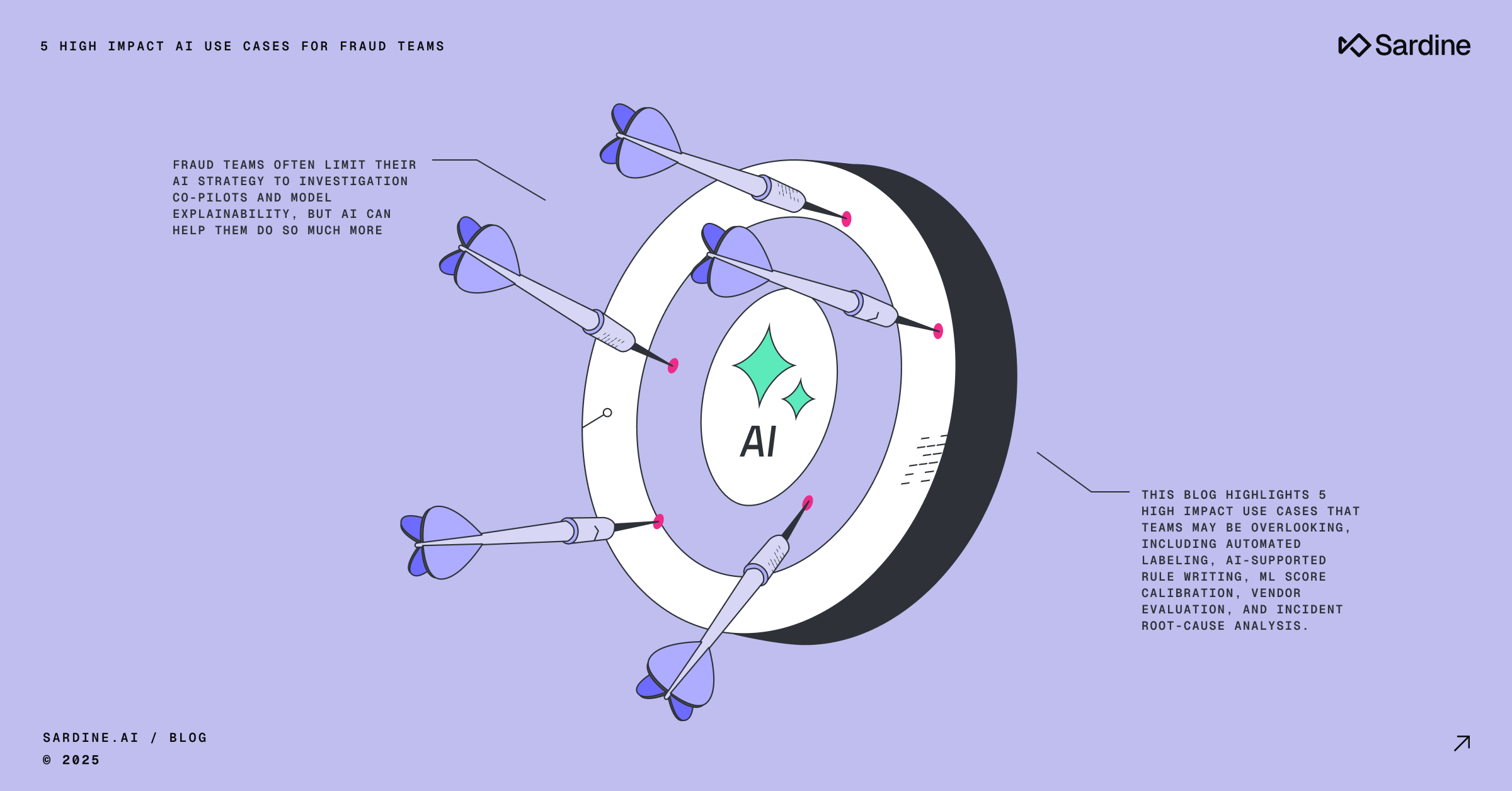Risk Platform Updates October 2023
Welcome to our monthly product newsletter, where we share updates on new features and product releases. This month, we shipped 8 updates to the risk platform to improve our investigative tools, rules editor, and case management capabilities.
If you have any questions, drop us a note at productupdates@sardine.ai or get in touch with your dedicated Account Manager.
This month's releases:
- 🗂️ Case Management: Linked Entities
- 🗂️ Case Management: Linked Transactions
- 📝 Rules Engine: Rules Editor Enhancements
- 📝 Rules Engine: Rules Library Enhancements
- 🕵️ Investigations: Banking Widget
- 🕵️ Investigations: Transactions Widget
- 🕵️ Investigations: Network Links
Let’s dive in!
PS: If you want to receive these updates straight to your inbox, subscribe to the newsletter using the form on the left (desktop) or at the bottom of the page (mobile).
Case Management Updates
Linked Entities: We now include an enhanced widget for linking multiple suspicious entities (customers or businesses) to a case. This also includes the ability to manually add entities to cases through our Customer Details tab and other entry points.

Linked Transactions: You can also link suspicious transactions associated with related entities to a case. This allows you quickly drill down on transactional data through several filters including time, entity, and payment method, and then easily link them to a case en masse.

Rules Engine Updates
Rule Editor Enhancements: We've improved the user experience and added new capabilities to our no-code rule editor to make rule creation and management easier and more intuitive. This update includes the following improvements to rule creation, conditions, and action tags:
- Updated the nesting UI in the rule editor to make condition and sub-condition grouping more intuitive
- Make rule condition output text more clear and changed styling to improve readability
- Added validation and guardrails to the rule editor to improve rule creation (e.g. auto-adding brackets to array data types and not allowing mismatched type entries)

Rule Library Enhancements: Our new rule library features comprehensive rulesets for various use cases, such as customer identification, device evaluation, and payment fraud. You can also create your own custom checkpoints, import rules into your active library, and test them in Shadow Mode before going live.
This update also introduces a "Suggested" section that recommends rules that may be relevant based on your platform activity and active rules.
If you're a multi-tenant or Sponsor Bank OS user, you can also import rules into any of your sub-accounts for advanced rule management.

Investigations Updates
Banking Widget: To simplify investigations involving your user's banks, we've created a new Bank Details widget that lists the user's bank name, account and routing number, account type, account holder, currency, and current balance.
If you want to explore any of the user's banking information, click on any field and you'll be able to explore any additional names, emails, and addresses associated with the user's bank account, as well as additional open banking data about the user's account type, historical account balance, average balance, available balance, balance refresh, and Plaid ID.

Transaction Widget: We've made similar updates to the Transactions Widget located on the Customer Details page. You'll now be able to easily access a summary of important data points, filter through date and transaction status, and reorganize columns so you can surface the data points that are most important to you. You'll also be able to sort the total amount of transactions by value and count.
The widget also includes the following new columns: ID, session Key, transaction status, payment mode, payment instrument, item category, transaction type, source, date, action type, indemnification decision, and indemnification reason.

Network Graph: You can now view the Network Graph in both the Customer Intelligence and Session Details pages. Our data shows that investigating network connections via consortium data consistently translates into earlier detection of fraudulent activity.
By surfacing these links earlier in the investigative flow, your investigators will be able to find any suspicious relationships related to fraud a lot faster.




%20(1).png)





.png)

